From the Trenches
The Doctor Is In
By NIKHIL SWAMINATHAN
Tuesday, December 10, 2013
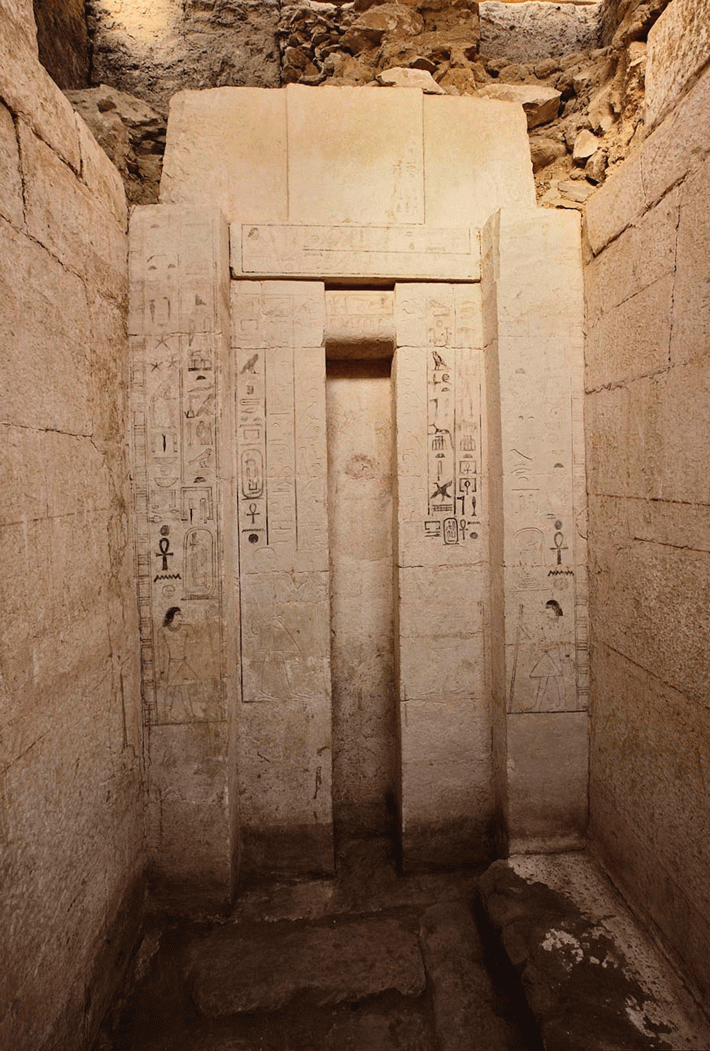 A Czech team investigating the site of Abusir, a necropolis 15 miles south of Cairo, discovered the tomb of a royal physician dating back to the twenty-fourth century B.C. The doctor, Shepseskafankh, was a key member of the court of Niuserre, and his 2,500-square-foot limestone tomb contains a chapel and seven underground chambers, previously looted, where he and his family were interred.
A Czech team investigating the site of Abusir, a necropolis 15 miles south of Cairo, discovered the tomb of a royal physician dating back to the twenty-fourth century B.C. The doctor, Shepseskafankh, was a key member of the court of Niuserre, and his 2,500-square-foot limestone tomb contains a chapel and seven underground chambers, previously looted, where he and his family were interred.
The most significant artifact found in the tomb was an 11.5-foot stela, or, as the archaeologists refer to it, a “false door,” on which were inscribed several titles that Shepseskafankh held. They included Priest of Re in the Temples of the Sun and Priest of Khnum. According to the excavation’s leader, Miroslav Bárta of the Czech Institute of Egyptology, Shepseskafankh was also known as “overseer of drugs of the Great House,” meaning he was the official doctor and pharmacist of the royal family.
Bárta notes that Abusir likely contains dozens of large tombs erected for many high-ranking members of ancient Egypt’s 5th Dynasty. Officials of the 4th Dynasty are interred in Giza, whereas those of the 6th are at Saqqara. “The discovery of the tomb of Shepseskafankh,” says Bárta, “shows above all how rich the potential of the sites on the pyramid fields is.”
Thorfinn the Mighty's Thing
By ERIC A. POWELL
Tuesday, December 10, 2013
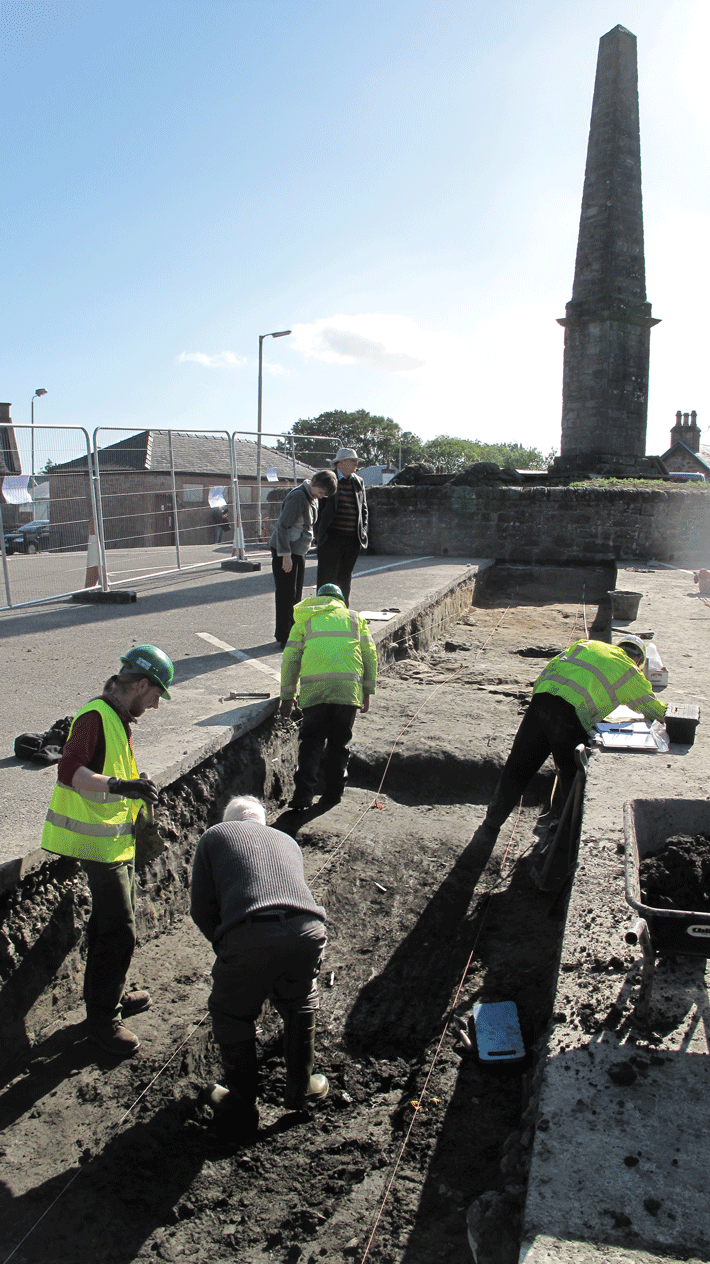 Archaeologists digging beneath a parking lot in the Scottish town of Dingwall have uncovered the remains of a massive mound where the Viking earl Thorfinn the Mighty once convened his parliament, known then as a thing, from the Old Norse word for “assembly.” Built on Thorfinn’s orders in the eleventh century, the thing mound became the site of Dingwall’s “moot hill,” or medieval assembly ground, after Norse control of Scotland waned. The modern parking lot was first identified as the possible site of the thing mound and later moot hill by archaeologist Oliver O’Grady, of OJT Heritage. After a ground-penetrating radar survey backed up his hunch, this year’s excavations confirmed the existence of the mound. The only other mound in the United Kingdom excavated and shown to have been built as a legal assembly site is in southern England.
Archaeologists digging beneath a parking lot in the Scottish town of Dingwall have uncovered the remains of a massive mound where the Viking earl Thorfinn the Mighty once convened his parliament, known then as a thing, from the Old Norse word for “assembly.” Built on Thorfinn’s orders in the eleventh century, the thing mound became the site of Dingwall’s “moot hill,” or medieval assembly ground, after Norse control of Scotland waned. The modern parking lot was first identified as the possible site of the thing mound and later moot hill by archaeologist Oliver O’Grady, of OJT Heritage. After a ground-penetrating radar survey backed up his hunch, this year’s excavations confirmed the existence of the mound. The only other mound in the United Kingdom excavated and shown to have been built as a legal assembly site is in southern England.
Point-and-Shoot Obsidian Analysis
By NIKHIL SWAMINATHAN
Tuesday, December 10, 2013
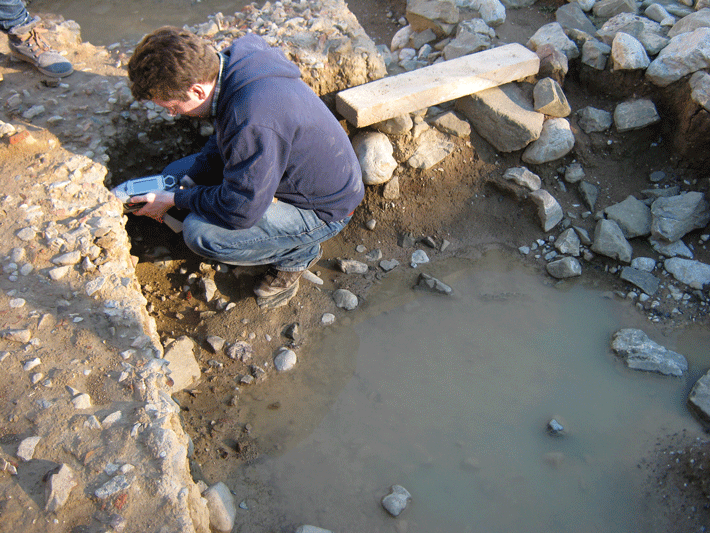
Archaeologists can decipher a culture’s trade network and the distances it might have covered by tracing obsidian, used by ancient people for making tools, back to its source volcano. Until now, researchers sent the volcanic glass artifacts uncovered at sites to laboratories for analysis, with results only available months later. The time-consuming process could take up to five minutes per fragment—and there are often a lot of fragments.
University of Sheffield research fellow Ellery Frahm has successfully tested a new method for performing on-site obsidian sorting on more than 600 artifacts at two sites in Armenia. Frahm used a tool from the lab, a handheld instrument resembling a supermarket price gun, that performs X-ray fluorescence (XRF), scanning an artifact in only 10 seconds. The device discerns the concentration of certain elements in the material—such as iron and zirconium—creating a chemical signature that can be compared with nearby obsidian sources.
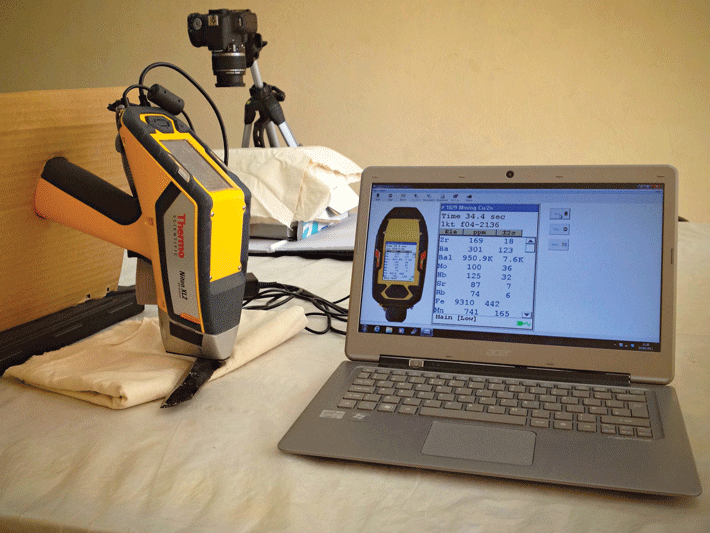 Moving XRF into the field, Frahm explains, could offer archaeologists real-time, on-site guidance for their excavation strategies. Critics, however, say the method sacrifices analytic precision, which would render it useless in regions that have a glut of obsidian sources, such as western Mexico.
Moving XRF into the field, Frahm explains, could offer archaeologists real-time, on-site guidance for their excavation strategies. Critics, however, say the method sacrifices analytic precision, which would render it useless in regions that have a glut of obsidian sources, such as western Mexico.
Frahm likens the method to the preset modes on a digital camera—though the process lacks the control and precision of traditional lab methods, it provides a useful, expedient shortcut. “The preset modes allow one to take many more photos, often very good ones, much faster,” he says. “That’s not a bad thing.”
Idu: Lost City of Northern Iraq
By JASON URBANUS
Tuesday, December 10, 2013
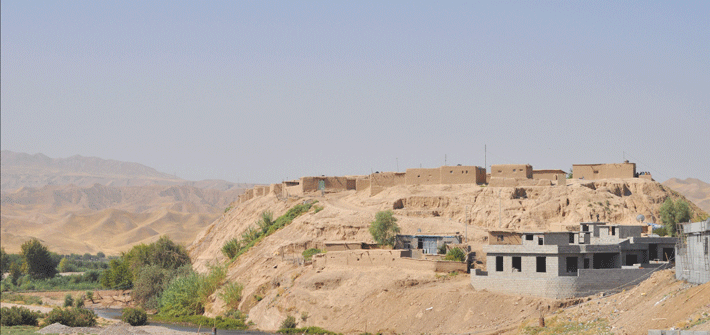
Archaeologists working in the Kurdish region of northern Iraq have located the ancient city of Idu. The international team unearthed the settlement while excavating a tell along the Lower Zab River. Although Idu’s existence was known from Assyrian texts, its location was previously unidentified.
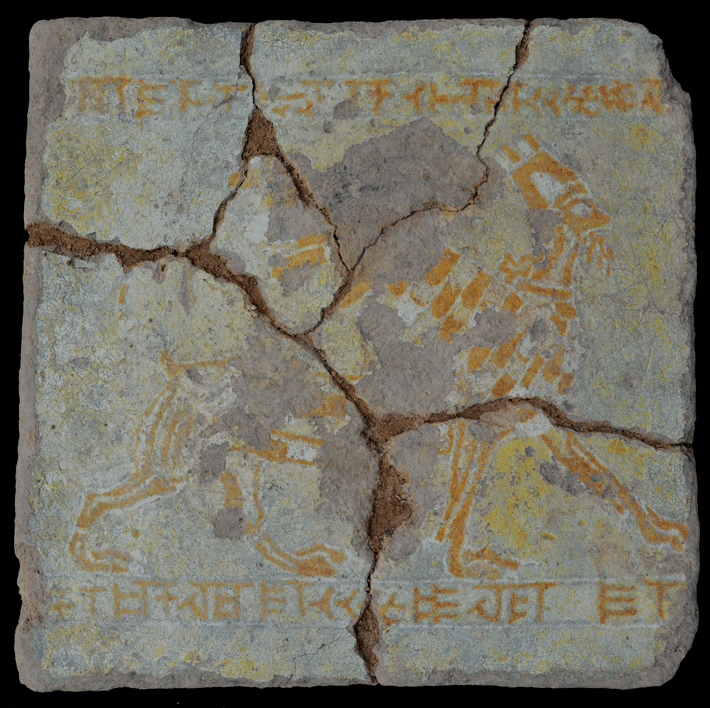 Beginning in the thirteenth century B.C., Idu flourished as a provincial capital of the Assyrian Empire. During this period, and also during the interval when Idu gained its independence, the settlement featured lavish royal palaces. This prosperity is attested to by ornate bricks, cylinder seals, and artworks that depict mythological scenes. Researchers ascertained the city’s identity through a series of cuneiform inscriptions. “The discovery of Idu fills a gap in what scholars had previously thought was a dark age in the history of the ancient Near East, and it helped us to redraw the political and historical map of Assyria in its early stage,” says Cinzia Pappi, an archaeologist from the University of Leipzig.
Beginning in the thirteenth century B.C., Idu flourished as a provincial capital of the Assyrian Empire. During this period, and also during the interval when Idu gained its independence, the settlement featured lavish royal palaces. This prosperity is attested to by ornate bricks, cylinder seals, and artworks that depict mythological scenes. Researchers ascertained the city’s identity through a series of cuneiform inscriptions. “The discovery of Idu fills a gap in what scholars had previously thought was a dark age in the history of the ancient Near East, and it helped us to redraw the political and historical map of Assyria in its early stage,” says Cinzia Pappi, an archaeologist from the University of Leipzig.
Neanderthal Smorgasbord
By ZACH ZORICH
Tuesday, December 10, 2013
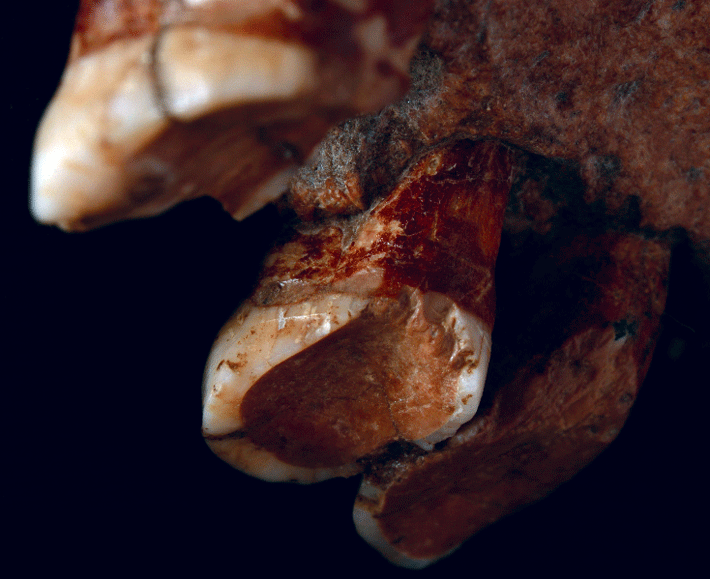 How monotonous was Neanderthal cuisine? The bones of large herbivores found at Neanderthal sites across Europe and Asia seem to indicate that their meals consisted of one course: meat. Several new studies, however, reveal a wider variety of menu options.
How monotonous was Neanderthal cuisine? The bones of large herbivores found at Neanderthal sites across Europe and Asia seem to indicate that their meals consisted of one course: meat. Several new studies, however, reveal a wider variety of menu options.
Isotope analysis of bones from Kudaro 3 in the Caucasus Mountains (in a disputed area of Georgia) show that Neanderthals there dined on salmon. Fish was also on the menu in southeastern France, at Abri du Maras, where analysis of the residue left on stone tools shows that Neanderthals also ate duck, rabbit, and possibly mushrooms. And when the meals were over, Neanderthals cleaned up with toothpicks that left grooves in their teeth found at Cova Foradà in Spain.
Neanderthals may have made for good dinner companions, but maybe not everything they ate accorded with modern tastes. Research published in 2012 shows that the tartar on Neanderthal teeth contains microfossils from a wide variety of plant foods and medicines (“Neanderthal Medicine Chest,” November/December 2012). But Laura Buck and Chris Stringer of London’s Natural History Museum suggest that Neanderthals may not have directly eaten these plants, but rather ate herbivores’ stomachs containing them. Before you make a face: “We know that many modern hunter-gatherers eat the stomach contents of their prey,” says Stringer. “The Inuit regarded this as a special treat.”
Advertisement
Advertisement
IN THIS ISSUE
From the Trenches
French Revolution Forgeries?
Off the Grid
Ham Hill's Violent History
Tracking the Ancient Apache
The Well-Dressed Dead
Lego Supports Slumping Mummy
Mississippian Burning
A Final Journey by Horse
Neanderthal Smorgasbord
Point-and-Shoot Obsidian Analysis
Idu: Lost City of Northern Iraq
Thorfinn the Mighty's Thing
The Doctor Is In
Artifact
Roman Britain's finest work
Advertisement

Recent Issues
-
 May/June 2024
May/June 2024
-
 March/April 2024
March/April 2024
-
 January/February 2024
January/February 2024
-
 November/December 2023
November/December 2023
-
 September/October 2023
September/October 2023
-
 July/August 2023
July/August 2023
-
 May/June 2023
May/June 2023
-
 March/April 2023
March/April 2023
-
 January/February 2023
January/February 2023
-
 November/December 2022
November/December 2022
-
 September/October 2022
September/October 2022
-
 July/August 2022
July/August 2022
-
 May/June 2022
May/June 2022
-
 March/April 2022
March/April 2022
-
 January/February 2022
January/February 2022
-
 November/December 2021
November/December 2021
-
 September/October 2021
September/October 2021
-
 July/August 2021
July/August 2021
-
 May/June 2021
May/June 2021
-
 March/April 2021
March/April 2021
-
 January/February 2021
January/February 2021
-
 November/December 2020
November/December 2020
-
 September/October 2020
September/October 2020
-
 July/August 2020
July/August 2020
-
 May/June 2020
May/June 2020
-
 March/April 2020
March/April 2020
-
 January/February 2020
January/February 2020
-
 November/December 2019
November/December 2019
-
 September/October 2019
September/October 2019
-
 July/August 2019
July/August 2019
-
 May/June 2019
May/June 2019
-
 March/April 2019
March/April 2019
-
 January/February 2019
January/February 2019
-
 November/December 2018
November/December 2018
-
 September/October 2018
September/October 2018
-
 July/August 2018
July/August 2018
-
 May/June 2018
May/June 2018
-
 March/April 2018
March/April 2018
-
 January/February 2018
January/February 2018
-
 November/December 2017
November/December 2017
-
 September/October 2017
September/October 2017
-
 July/August 2017
July/August 2017
-
 May/June 2017
May/June 2017
-
 March/April 2017
March/April 2017
-
 January/February 2017
January/February 2017
-
 November/December 2016
November/December 2016
-
 September/October 2016
September/October 2016
-
 July/August 2016
July/August 2016
-
 May/June 2016
May/June 2016
-
 March/April 2016
March/April 2016
-
 January/February 2016
January/February 2016
-
 November/December 2015
November/December 2015
-
 September/October 2015
September/October 2015
-
 July/August 2015
July/August 2015
-
 May/June 2015
May/June 2015
-
 March/April 2015
March/April 2015
-
 January/February 2015
January/February 2015
-
 November/December 2014
November/December 2014
-
 September/October 2014
September/October 2014
-
 July/August 2014
July/August 2014
-
 May/June 2014
May/June 2014
-
 March/April 2014
March/April 2014
-
 January/February 2014
January/February 2014
-
 November/December 2013
November/December 2013
-
 September/October 2013
September/October 2013
-
 July/August 2013
July/August 2013
-
 May/June 2013
May/June 2013
-
 March/April 2013
March/April 2013
-
 January/February 2013
January/February 2013
-
 November/December 2012
November/December 2012
-
 September/October 2012
September/October 2012
-
 July/August 2012
July/August 2012
-
 May/June 2012
May/June 2012
-
 March/April 2012
March/April 2012
-
 January/February 2012
January/February 2012
-
 November/December 2011
November/December 2011
-
 September/October 2011
September/October 2011
-
 July/August 2011
July/August 2011
-
 May/June 2011
May/June 2011
-
 March/April 2011
March/April 2011
-
 January/February 2011
January/February 2011
Advertisement






